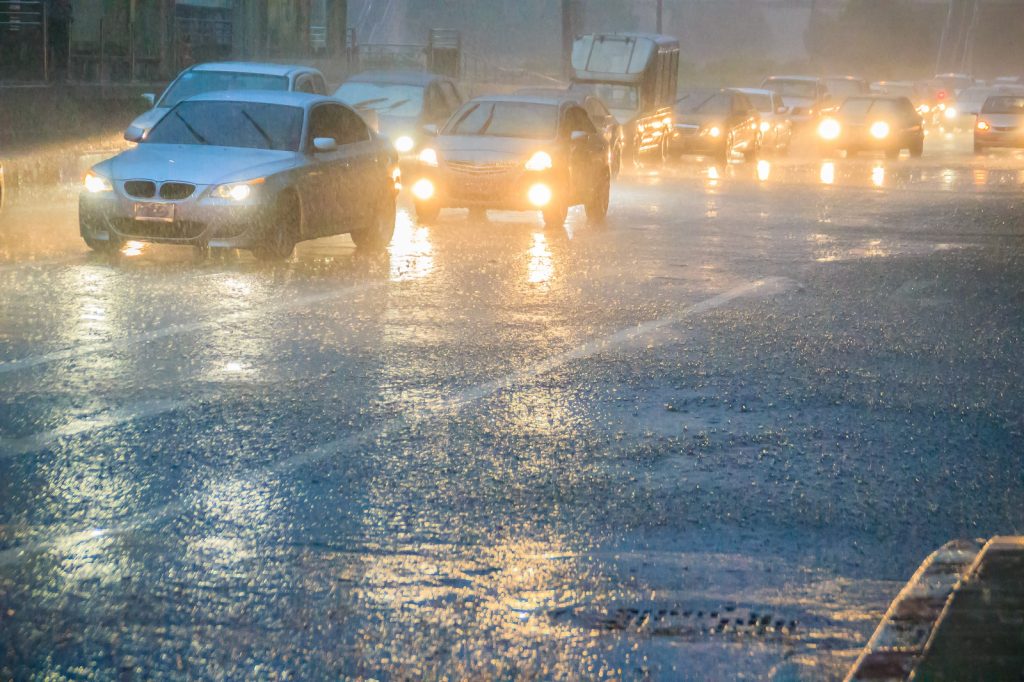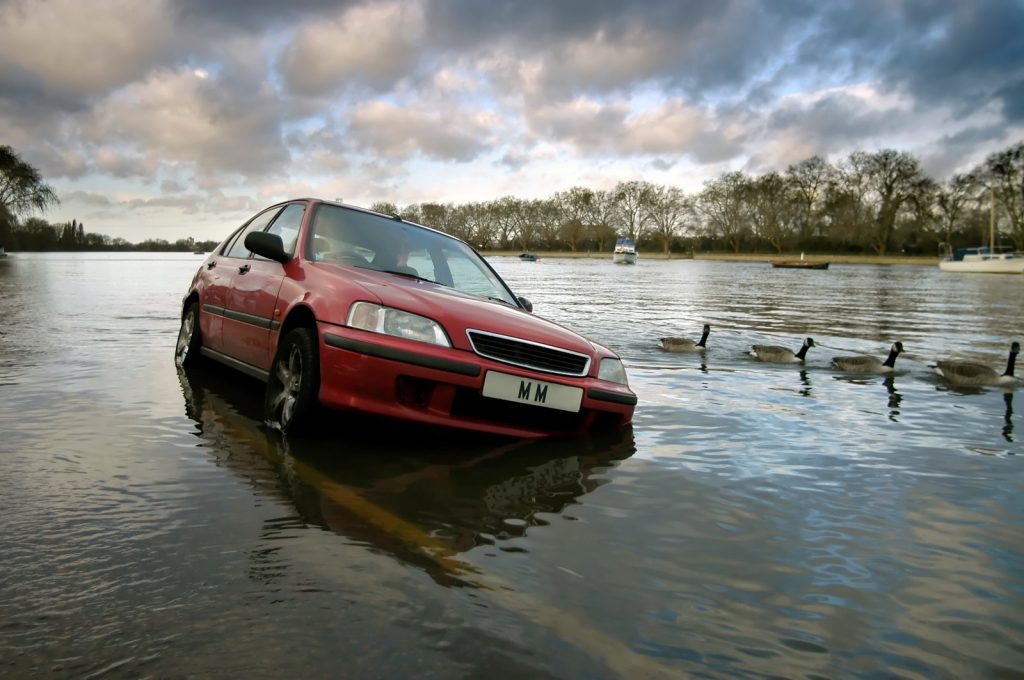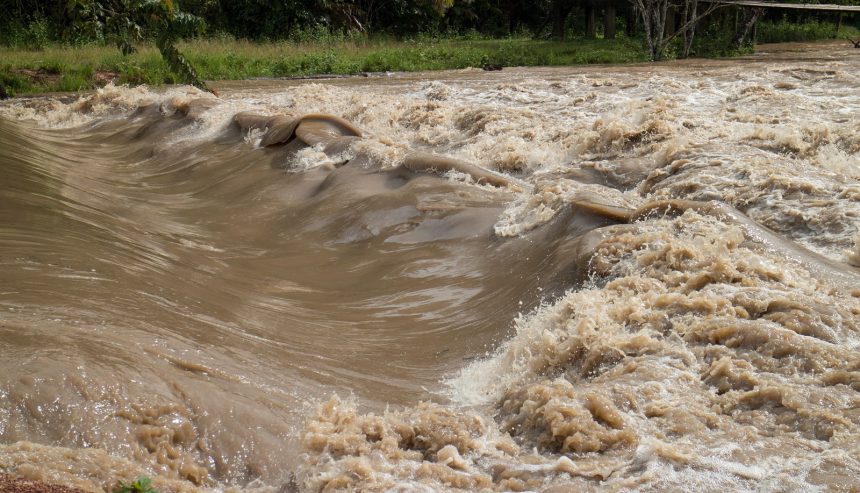Picture this: torrential downpours, melting snow, and overwhelmed city drains. These are the ingredients that set the stage for the menacing arrival of flash floods. Unleashing their fury within a mere six hours of the triggering events, flash floods strike swiftly and catch the unprepared off guard.
Here are more flash flood facts to give you an idea of how dangerous flash floods can be.
Top 15 Flash Floods Facts
1. Every region in the United States can be affected by flash floods, especially low-lying areas: near river beds and coastlines.
Flash floods are a common occurrence throughout the United States, and no region is entirely immune to their effects. However, low-lying areas, particularly those near river beds, and coastlines, are particularly vulnerable. These areas are more susceptible to flash floods due to their proximity to bodies of water and the potential for heavy rain or rapid snowmelt. The combination of natural topography and weather patterns makes these regions more prone to sudden and intense flooding.
2. Cities are more likely to be affected by flash floods due to the predominant impermeable surfaces, such as asphalt, and the lack of natural drainage systems.
Flash floods pose a significant threat to urban areas, primarily due to the characteristics of cities themselves. Cities typically have a high concentration of impermeable surfaces, such as roads, sidewalks, and parking lots, which prevent water from infiltrating into the ground. Instead, the water rapidly accumulates on these surfaces, leading to increased runoff and a higher likelihood of flash flooding.
Furthermore, many cities have limited natural drainage systems, which exacerbates the problem. Natural drainage systems, such as rivers, streams, and wetlands, help absorb and channel water during heavy rainfall events. However, urbanization often disrupts these natural systems through the construction of infrastructure, resulting in decreased capacity to handle large volumes of water. As a result, cities are more susceptible to flash floods and their associated dangers.

3. The water from flash floods can reach a height of 20 feet, severely damaging anything in its path.
Flash floods are characterized by their rapid onset and high volume of water. In extreme cases, the water levels can rise to significant heights, reaching up to 20 feet or more. This immense volume of water can wreak havoc on anything in its path, causing severe damage to buildings, infrastructure, and natural landscapes.
As the water rapidly accumulates, it gains momentum and force, leading to a powerful surge that can sweep away vehicles, uproot trees, and destroy or displace structures. The sheer height and force of the floodwater make it a formidable destructive force, capable of causing extensive damage to both urban and rural environments.
4. Just 2 feet of floodwater moving at 9 feet per second (standard speed of flash floods) is enough to sweep vehicles away, move 100-pound rocks, uproot trees, or level buildings.
Even a relatively small amount of floodwater, when combined with the velocity of a flash flood, can have devastating consequences. As little as 2 feet of water moving at the standard speed of flash floods, which is approximately 9 feet per second, possesses tremendous force and can sweep away vehicles. The sheer power of the water is also capable of moving heavy objects like 100-pound rocks, uprooting trees from their foundations, and even leveling buildings.
It is crucial to recognize the immense strength of flash flood waters and the hazards they pose. Attempting to drive or walk through floodwaters, even at these seemingly shallow depths, can be extremely dangerous and potentially life-threatening.
5. Just 6 inches of rapidly moving floodwater can sweep someone off their feet.
Even a relatively shallow depth of rapidly moving floodwater can pose a significant risk to individuals. Just 6 inches of floodwater moving swiftly can be enough to sweep someone off their feet and carry them away. This phenomenon is particularly dangerous because people often underestimate the force and depth of floodwaters, leading them to venture into hazardous situations.
It is essential to exercise caution and avoid walking or driving through any flooded areas, regardless of their apparent depth. Even seemingly shallow water can hide unseen hazards and possess enough force to overwhelm a person’s ability to maintain footing and balance.
6. Between 2004 and 2013, an average of 75 people died from flash floods in the United States per year.
Flash floods have claimed numerous lives in the United States, and the statistics highlight the seriousness of this natural hazard. Between 2004 and 2013, an average of 75 people died each year as a result of flash floods. These fatalities serve as a stark reminder of the dangers associated with these sudden and powerful floods.
The loss of life caused by flash floods underscores the importance of preparedness, awareness, and taking appropriate actions when faced with such events. Education and proactive measures can help reduce the risks of flooding and save lives.
7. Nearly all who perished during flash floods tried to outrun the waters rather than going to a higher area.
One of the most alarming flash flood facts observed in flash flood-related fatalities is the tendency of individuals to attempt to outrun the floodwaters instead of seeking higher ground. Often driven by panic or a lack of awareness, people may underestimate the speed and force of the approaching floodwaters, leading them to make ill-advised decisions.
Choosing to outrun the floodwaters is a perilous choice, as it exposes individuals to unnecessary risks. Instead, it is crucial to seek higher ground immediately when a flash flood warning is issued or when signs of flooding are present. Climbing to elevated areas or taking refuge on upper floors can significantly increase survival chances during a flash flood event.
8. Two-thirds of the deaths claimed by flash floods occur in vehicles when drivers try to pass through the floodwater.

Vehicles can quickly become death traps during flash flood events. Shockingly, around two-thirds of flash flood-related deaths occur when individuals attempt to drive through floodwaters. This statistic highlights the severe danger and potential consequences of underestimating the power of flash floods.
Driving through floodwaters is incredibly risky due to the uncertainties hidden beneath the surface. The depth of the water, the force of the current, and the presence of debris can make the situation treacherous. It is critical to avoid driving through flooded areas, as even a relatively shallow flow can sweep vehicles away, leaving occupants in life-threatening situations.
9. Flash floods can cause extensive structural damage: 12 inches of floodwater on a 2,000-square-foot building can cause $50,000 worth of damage or more.
Flash floods not only pose a risk to human life but also result in significant structural damage to buildings and infrastructure. Even a relatively moderate level of flooding can cause extensive harm to properties. For example, 12 inches of floodwater on a 2,000-square-foot building can result in damages amounting to $50,000 or more.
The destructive power of floodwaters lies in their ability to infiltrate structures, compromising their integrity and causing long-lasting harm. The water can penetrate foundations, weaken walls, destroy electrical systems, and lead to mold and other secondary issues. Recovering from such damage can be a costly and time-consuming process, emphasizing the importance of preventive measures and flood-resistant design strategies.
10. Flash flood warnings are issued by the National Weather Service when a flash flood is imminent.
To help mitigate the risks posed by flash floods, the National Weather Service (NWS) plays a crucial role in issuing flash flood warnings. The NWS closely monitors weather patterns, precipitation levels, and other relevant data to detect and forecast potential flash flood events.
When a flash flood is imminent or already occurring, the NWS issues flash flood warnings to alert residents and emergency management agencies. These warnings serve as a critical signal for individuals to take immediate action, seek higher ground, and implement their emergency plans.
11. Flash floods can happen with little to no warning, making them extremely dangerous.
The lack of warning associated with flash floods amplifies their danger. They can manifest swiftly, catching people off guard regardless of their location—urban or rural.
What’s particularly alarming is their ability to affect areas not traditionally associated with flooding, such as dry creek beds or regions far from water bodies. This unpredictability escalates the risk as people might not perceive the imminent danger until it’s too late. Moreover, their rapid onset hinders timely evacuation or preparation efforts, making them exceptionally hazardous.
12. Flash floods are often precipitated by meteorological phenomena like thunderstorms, hurricanes, or sudden snowmelt.
In cases of heavy rainfall, the ground becomes saturated, and excess water quickly accumulates, overwhelming natural drainage systems. The volume and intensity of the precipitation within a short duration supersede the water-absorbing capacity of the soil, causing waterways to swell rapidly. This surge of water inundates surrounding areas, leading to flash flooding that impacts not only local communities but also larger regions downstream.
13. Flash floods can also increase the risk of landslides.
Risk of Landslides: The correlation between flash floods and landslides underscores the interconnectedness of natural disasters. The deluge of water brought on by flash floods can infiltrate and saturate soil and rock layers, decreasing their stability.
This destabilization, coupled with the force of the flowing water, can trigger landslides or mudslides. These events exacerbate the destruction and pose additional threats to communities, as they can block roads, bury structures, and further impede rescue and recovery efforts.
14. Flash floods exhibit a unique characteristic of recurrence, particularly in regions susceptible to heavy rainfall or with insufficient drainage infrastructure.
Due to their sudden and localized nature, flash floods might inundate the same area multiple times within a short span. This repetition heightens the risk of cumulative damage to infrastructure and landscapes, amplifying the challenges faced by affected communities in recovery and reconstruction efforts.
15. Climate change is increasingly linked to the exacerbation of extreme weather patterns, potentially intensifying the occurrence, magnitude, and frequency of flash floods.
The warming climate alters precipitation patterns, leading to more intense rainfall events in some regions. This alteration in weather dynamics can escalate the risk of flash floods, amplifying the vulnerability of communities that may not have previously experienced such heightened threats.
The resultant implications extend to heightened risks of property damage, economic losses, and threats to human lives, necessitating proactive mitigation and adaptation strategies at local, national, and global levels.
For water damage restoration, contact the paramedics of property damage!
Staying informed about flash flood warnings through reliable sources such as weather websites, news outlets, and mobile apps can greatly enhance preparedness and safety during flash flood events.
Now that you’ve learned about the top flash flood facts, it’s time to take action. Take a look at related articles to help you prepare and deal with flash floods:
- https://www.puroclean.com/blog/the-different-types-of-floods/
- https://www.puroclean.com/blog/spring-flooding-prevention/
- https://www.puroclean.com/blog/effects-of-a-flood-home/
- https://www.puroclean.com/blog/how-to-stay-safe-during-a-flood/
For professional fire, water damage restoration, and mold restoration services, contact your local PuroClean office.




